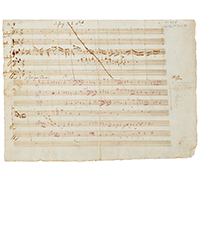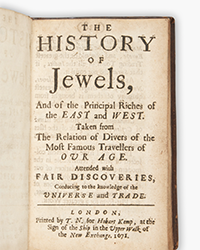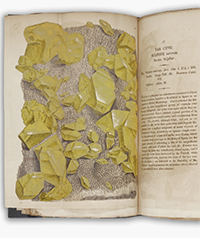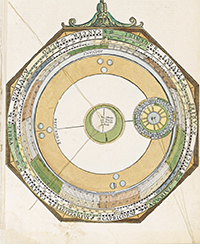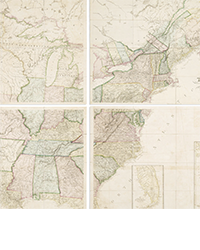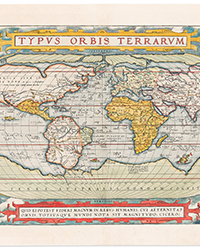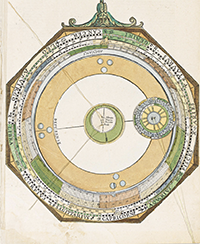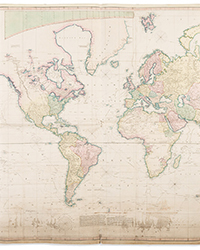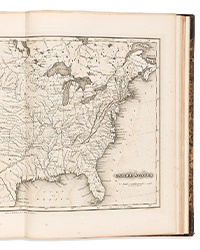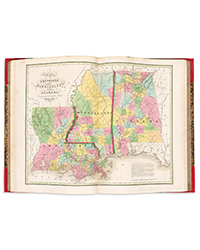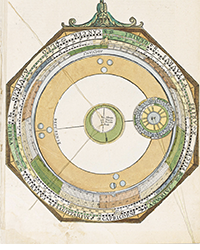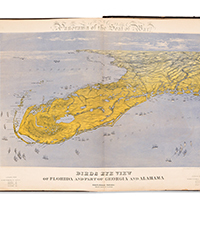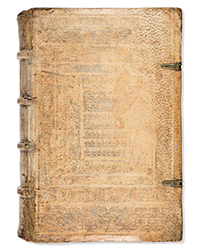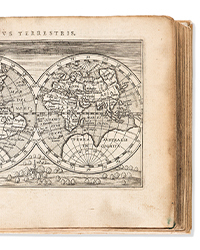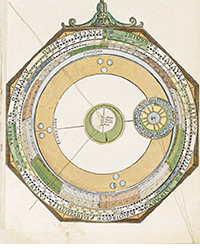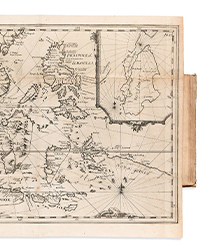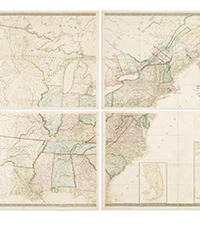Booksellers and collectors aren't known for being terrorists, but new regulations that may be adopted by the European Union to stop terrorists may do more to interfere with book collecting than terrorism. The proposed rules brought about an "urgent alert" from ILAB (International League of Antiquarian Booksellers) which fears these regulations will terrorize the book trade more than the terrorists.
Here is the story behind these rules that could potentially disrupt the trade in books from countries outside the European Union to those within. Last year, the European Commission prepared a set of proposed regulations to submit to the European Parliament. It targets "the import of cultural goods." While such regulations have appeared over the past several decades to protect the looting of cultural artifacts of countries with ancient histories, these rules were created specifically "to step up the fight against the financing of terrorism" by interfering with the "illicit trade in cultural goods." ISIS, in particular, has been known to sell looted artifacts from antiquity from Syria and Iraq, though it is dubious how much of this is books and manuscripts. Old Middle Eastern books have a limited market in Europe, and often what comes from this region are fakes, designed to make unscrupulous collectors believe they are buying some valuable looted artifact for a very cheap price.
The proposed regulations, which will rely on individual states to determine specifically how to enforce them and punish violators, target books and manuscripts over 250 years old. The primary means of enforcement is clear - paperwork. Soldiers and bombs may not stop terrorism, but the scourge of paperwork surely can destroy anything, the book trade included.
The regulations target many types of items of cultural heritage, but we will focus on books and related material. They fall into two categories, (1) rare manuscripts (at least 250 years old) and incunabula, and (2) other books and manuscripts at least 250 years old. The first category requires obtaining an import license to bring them into an EU country, the second requires an importer statement. ILAB notes that other than incunabula and rare manuscripts, the rules governing exports from EU countries also require they have a value of at least €50,000 (approximately US $61,000). For imports, however, there is no minimum value requirement. While those not familiar with the trade may assume that any book over 250 years old must be valuable, those in the trade realize there is much unimportant material of that age which has very little value, particularly if the condition is poor.
The difference between the two categories is the level of paperwork they impose. Those items requiring an import license need a license to be secured in advance. It must be obtained from the "competent authority" in the country to which it is to be shipped. "The application shall be accompanied by any supporting documents and information substantiating that the cultural goods in question have been exported from the source country in accordance with its laws and regulations." If the country from which the goods were shipped subscribes to the 1970 UNESCO Convention, then "the application shall be accompanied by any supporting documents and information substantiating that the cultural goods have been exported from that country [note: as opposed to the original source country] in accordance with its laws and regulations." The "competent authority" in each EU country has 30 days to request information missing from the application, and 90 more days to decide whether to accept or reject the application. Applications can be rejected for failure to demonstrate that goods were legally exported from the source country if coming from a non-UNESCO country, or from the exporting country if a UNESCO treaty member. There is one more ground for rejecting a license: "the competent authority has reasonable grounds to believe that the holder of the goods did not acquire them lawfully."
For those items requiring only an importer statement, rather than a license, the importer has to provide a statement declaring the items were shipped from the source country according to its laws if coming from a non-UNESCO country, or shipped legally from the exporting country if a UNESCO member. "The importer statement shall include a standardised document describing the cultural goods in question in sufficient detail for them to be identified by the customs authorities."
If these regulations are adopted by the European Parliament, they will go into effect on January 1, 2019.
ILAB has issued a call for its members, and anyone else, to send letters of protest to EU authorities. In its alert, the ILAB states, "This text considers subjecting dealers to administrative obligations that are disproportionate with the pursued objective... The European Union, which was built on freedom of movement, must first and foremost protect such values against arbitrary barriers to free trade."
While the added burden of paperwork to legitimate buyers and sellers is obvious, what is less clear is what these regulations, as applied to books and manuscripts, will accomplish. Along with the burden of paperwork, it may be hard to even know whether you are in compliance. Most books have dates, but not manuscripts. Are they more or less than 250 years old? And what constitutes a "rare" manuscript? Aren't manuscripts one-of-a-kind items, rare by definition? If you are fencing stolen books, clearly that is not a legal sale, whether by export or internally. What about an item stolen a century ago? In most cases, the seller will not even know that they are selling stolen goods.
How do judgments as to legality of shipping get made in the EU country? The honest seller and buyer get trapped in a pile of paperwork, while the illegal shipper or buyer simply lies. How will the customs agent in Europe know the difference? My guess is the European countries will not hire a bunch of book savvy customs inspectors to carefully enforce these regulations. More likely, most will look through the paperwork to see if it is filled out correctly, without having a clue from this information whether the book was shipped legally. And then, there will be the sticklers, the occasional bureaucrat whose greatest pleasure is making someone else's life miserable. We have all run into them.
Finally, will non-European booksellers feel they have been put at a disadvantage? It will now be more difficult for an American bookseller to sell a book to an EU customer than for an EU bookseller to sell to an American customer. Will American booksellers want to retaliate? Maybe we will see a trade war, with the weapon of choice being burdensome paperwork instead of tariffs.



![<b>Scandinavian Art & Rare Books Auctions, Dec. 4:</b> ROALD AMUNDSEN: «Sydpolen» [ The South Pole] 1912. First edition in jackets and publisher's slip case. <b>Scandinavian Art & Rare Books Auctions, Dec. 4:</b> ROALD AMUNDSEN: «Sydpolen» [ The South Pole] 1912. First edition in jackets and publisher's slip case.](https://ae-files.s3.amazonaws.com/AdvertisementPhotos/0a99416d-9c0f-4fa3-afdd-7532ca8a2b2c.jpg)
![<b>Scandinavian Art & Rare Books Auctions, Dec. 4:</b> AMUNDSEN & NANSEN: «Fram over Polhavet» [Farthest North] 1897. AMUNDSEN's COPY! <b>Scandinavian Art & Rare Books Auctions, Dec. 4:</b> AMUNDSEN & NANSEN: «Fram over Polhavet» [Farthest North] 1897. AMUNDSEN's COPY!](https://ae-files.s3.amazonaws.com/AdvertisementPhotos/a077b4a5-0477-4c47-9847-0158cf045843.jpg)
![<b>Scandinavian Art & Rare Books Auctions, Dec. 4:</b> ERNEST SHACKLETON [ed.]: «Aurora Australis» 1908. First edition. The NORWAY COPY. <b>Scandinavian Art & Rare Books Auctions, Dec. 4:</b> ERNEST SHACKLETON [ed.]: «Aurora Australis» 1908. First edition. The NORWAY COPY.](https://ae-files.s3.amazonaws.com/AdvertisementPhotos/6363a735-e622-4d0a-852e-07cef58eccbe.jpg)
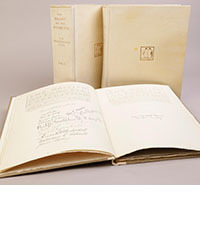
![<b>Scandinavian Art & Rare Books Auctions, Dec. 4:</b> SHACKLETON, BERNACCHI, CHERRY-GARRARD [ed.]: «The South Polar Times» I-III, 1902-1911. <b>Scandinavian Art & Rare Books Auctions, Dec. 4:</b> SHACKLETON, BERNACCHI, CHERRY-GARRARD [ed.]: «The South Polar Times» I-III, 1902-1911.](https://ae-files.s3.amazonaws.com/AdvertisementPhotos/3ee16d5b-a2ec-4c03-aeb6-aa3fcfec3a5e.jpg)

![<b>Scandinavian Art & Rare Books Auctions, Dec. 4:</b> [WILLEM BARENTSZ & HENRY HUDSON] - SAEGHMAN: «Verhael van de vier eerste schip-vaerden […]», 1663. <b>Scandinavian Art & Rare Books Auctions, Dec. 4:</b> [WILLEM BARENTSZ & HENRY HUDSON] - SAEGHMAN: «Verhael van de vier eerste schip-vaerden […]», 1663.](https://ae-files.s3.amazonaws.com/AdvertisementPhotos/d5f50485-7faa-423f-af0c-803b964dd2ba.jpg)
![<b>Scandinavian Art & Rare Books Auctions, Dec. 4:</b> TERRA NOVA EXPEDITION | LIEUTENANT HENRY ROBERTSON BOWERS: «At the South Pole.», Gelatin Silver Print. [10¾ x 15in. (27.2 x 38.1cm.) ]. <b>Scandinavian Art & Rare Books Auctions, Dec. 4:</b> TERRA NOVA EXPEDITION | LIEUTENANT HENRY ROBERTSON BOWERS: «At the South Pole.», Gelatin Silver Print. [10¾ x 15in. (27.2 x 38.1cm.) ].](https://ae-files.s3.amazonaws.com/AdvertisementPhotos/fb024365-7d7a-4510-9859-9d26b5c266cf.jpg)
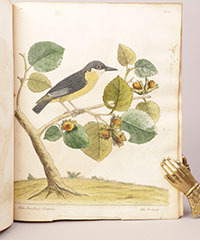
![<b>Scandinavian Art & Rare Books Auctions, Dec. 4:</b> PAUL GAIMARD: «Voyage de la Commision scientific du Nord, en Scandinavie, […]», c. 1842-46. ONLY HAND COLOURED COPY KNOWN WITH TWO ORIGINAL PAINTINGS BY BIARD. <b>Scandinavian Art & Rare Books Auctions, Dec. 4:</b> PAUL GAIMARD: «Voyage de la Commision scientific du Nord, en Scandinavie, […]», c. 1842-46. ONLY HAND COLOURED COPY KNOWN WITH TWO ORIGINAL PAINTINGS BY BIARD.](https://ae-files.s3.amazonaws.com/AdvertisementPhotos/a7c0eda0-9d8b-43ac-a504-58923308d5a4.jpg)
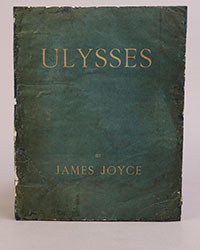
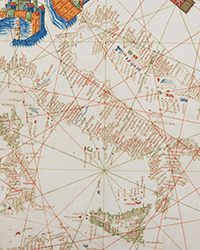
![<b>Sotheby’s, Dec. 11:</b> Darwin and Wallace. On the Tendency of Species to form Varieties..., [in:] <i>Journal of the Proceedings of the Linnean Society,</i> Vol. III, No. 9., 1858, Darwin announces the theory of natural selection. £100,000 to £150,000. <b>Sotheby’s, Dec. 11:</b> Darwin and Wallace. On the Tendency of Species to form Varieties..., [in:] <i>Journal of the Proceedings of the Linnean Society,</i> Vol. III, No. 9., 1858, Darwin announces the theory of natural selection. £100,000 to £150,000.](https://ae-files.s3.amazonaws.com/AdvertisementPhotos/00d5fd41-2542-4a80-b119-4886d4b9925f.png)

